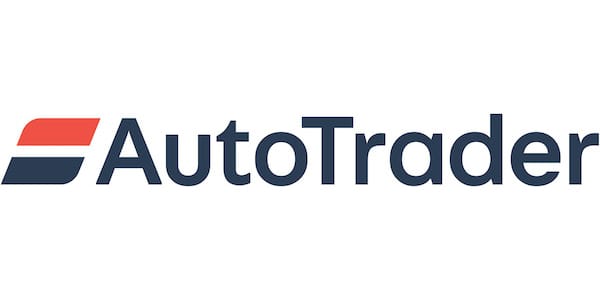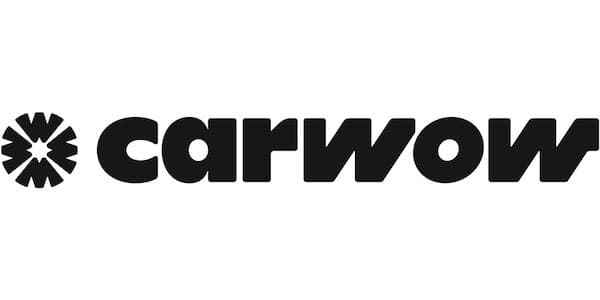Buying a car should be an exciting and pleasurable experience but for thousands of drivers finding, inspecting and negotiating for their next used vehicle is a daunting process.
They shudder at the thought of haggling down the price with a dealer or private seller, and that’s before they have even started giving their potential next purchase a good look over. A recent survey from online car marketplace CarGurus found that more than half (53%) of purchasers said they found it too uncomfortable to bargain for a price, 16% didn’t want to offend the seller, and 15% said they didn’t know how to haggle.
Others just want the experience sorted, the car found and the price agreed on as quickly as possible, without used car dealers trying to coax them into buying something they don’t want or pressuring them to buy unnecessary ‘add-ons’.
This unease with car dealers has led to the rapid growth of online car sellers, which allow you to buy a car and have it delivered to your door with a minimum of hassle – albeit without the opportunity to haggle over pricing if it’s something you enjoy.
However, there is an another option that may be worth considering – buying a car at auction. Auction houses are popular places for some buyers, with some clear benefits over buying from a dealer or private seller:
Buying a car at auction – the pros
- There’s usually a varied choice of cars on offer
- You can look around vehicles alone and in your own time
- You can compare with other cars in the same sale
- It’s quick: cars can be sold in less than a minute as buyers bid and experienced auctioneers puts the hammer down on sale after sale
- It can be good value: you may end up paying well under the retail price for a similar car from a dealership
- There is no pressure: you either choose to take part in the auction or you keep your hands down
- There’s no haggling on price: as the sale progresses the vehicle’s value sorts itself out
- It’s an exciting atmosphere, usually with a good buzz
Buying a car at auction – the cons
- You can’t test drive a car beforehand
- There’s no opportunity for a detailed mechanical inspection
- You don’t get a warranty (unless the car is still under its new car warranty)
- Cars are sold ‘as-is’ with no cosmetic repairs or valeting
- There’s no cooling-off period – you win the auction, it’s yours
- The car may not be legally driveable (it may not have an MOT, for example)
- There’s no-one to guide you through the sales process or sort out any problems with the vehicle – ether before or after the sale
Not just for professionals
Many people think that car auctions are for dealers and professional fleet buyers only. While it’s true that car dealerships will have agents – or their own personnel – snapping up hundreds of cars for their showrooms on a regular basis, lots of auction houses welcome private buyers looking for a single car.
Just make sure you check that you are attending a private buyer auction before you go, as some auctions are only for car dealers.
How do you participate in a car auction?
You arrive at the auction venue to look around and inspect any vehicles up for sale that day. There will be a catalogue describing the cars, compiled by the auction house. This will usually be available online in days leading up to the sale, as well as on the day.
When the auction starts, the cars are driven through the sales room in the order they appear in the catalogue. The auctioneer sets a starting price and asks if anyone will take it on.
Assuming someone does, other bidders then raise the price, under the direction of the auctioneer, until there are no more bids. When bidding stops the auctioneer sells the car to the highest bidder when he bangs his hammer down (called the ‘hammer price’).
All sorts of cars are sold at auction – near-new, old, vintage, high-mileage. But the bulk of vehicles usually come from dealership chains or rental companies anxious to off-load some of their ageing stock, so they’re often up to three years old with fairly normal mileage.
Some car dealerships will also use auctions to dispose of high-mileage cars or niche models they have taken in as part-exchange deals but don’t consider worth trying to sell on themselves.
Cars that have been repossessed by finance companies can also turn up at auction, as can Category N write-offs (vehicles that an insurer has deemed repairable with no structural damage), so it’s worth making sure you know exactly what you are dealing with before you start bidding.
Cars that have had serious repair work might be put on to a vehicle database. These cars will have a note against them in the catalogue showing VCAR (vehicle condition and alert register). These cars should be treated with extreme care if you are thinking of buying.
What you should do at an auction
Register your interest online with the auction company and that will allow you to search lists to find cars you are interested in. Turn up early for the actual sale to give yourself as much time as possible looking around your chosen cars. You won’t be able to have a test drive, so you can only judge a car by its looks and the sound of its engine.
Take someone who is mechanically-minded if you’re not savvy yourself. Look around the bodywork and the interior for signs of wear or damage. Listen for unusual engine noises and check the amount, and colour, of any exhaust smoke.
There’s usually two hours for inspection before the sale starts. When it does the cars (known as lots) are driven into the buying arena and the bidding starts.
If you are serious about buying something, make sure you can be seen clearly by the auctioneer and raise your hand when you want to take part. You will then have the auctioneer’s attention and they will continue to look to you during the sale. A good shake of the head will let them know that you’re ‘out’.
Set yourself a budget for your purchases and stick to it. It is easy to get carried away in the heat of an auction and you could end up spending more than you intended at the end of the sale.
If you do secure a car you will be asked to pay for it at the end of the auction. Each auction house has different rules but often you will be asked for a deposit of 10% or £500 (whichever is greater). After that you should have 24 hours to settle the rest of the price plus buyer’s charges.
The buyer’s fee is the commission you pay to the auction for helping you to buy a vehicle. This is usually 5% of the hammer price of the car. Remember there’s also VAT to pay on this service.
Most auction houses ask for buyers to be over 17 years old. Children are allowed into the buying arena, though, as long as they are accompanied by an adult.
When you have paid for your car and any fees in full you will have two or three days to take the car away, depending on auction house. After this time, most auction firms will charge for storage. It is your responsibility to make sure the vehicle you have bought has a valid MOT and road tax before you can take it on the road. You must have insurance for the car too, of course.
Before you take part at auction
Auctions are exciting, fast-paced and fun so it’s hardly a chore going to a few before you attend one where you might actually make a purchase. Watch how other buyers act and behave and make sure you are comfortable with the whole process.
Do some research on your chosen lots beforehand to get a feel for their worth and value and see what the auction house has to say about specific models you like, in their sale catalogue. Much of this can be found upfront, online.
Relax and enjoy the experience and, with some decent research under your belt and a bit of luck in the bidding, you could be driving away with a bargain dream car.
Auction jargon
Catalogue – book showing each available car and details about its age, mileage, condition and the all-important lot number
Entry form – the report that sellers fill in with complete vehicle details before it can be entered into the sale
Hammer – the auctioneer bangs this when a lot comes to an end. It’s known as the ‘fall of the hammer’
Inspection report – expert assessment of a car’s condition for auction experts. It includes visible damage
Lot number – the number given to every car on sale or ‘lot’
Non-runners – these cars won’t start
Open auction – can be attended by everyone, as opposed to some that invite specific people or organisations
Reserve price – the bidding has to get above this minimum price (set by the seller) for it to be sold. It’s kept secret and if it doesn’t reach the reserve the car remains unsold
Rostrum – where the auctioneer stands
VCAR – a car that has had extensive repair work to it or has been listed as an insurance write off will appear with this marking which means vehicle condition and alert register
Read more:





